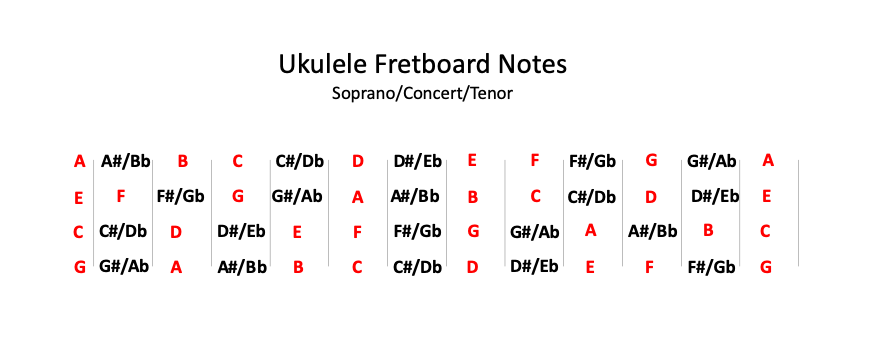Below are the notes on the fretboard for a guitar in Open D tuning, which means that your 1st and 6th strings are lowered to a D, your 2nd string is lowered to A and your G string is lowered to F#.
The black dots represent the markers on your guitar on fret 3, 5, 7, 9 and 12 (double marker). The red notes are the natural notes and the black notes are the sharps and flats.
Guitar Fretboard Notes (Open D Tuning)
We hope you enjoyed this lesson. If you have any questions or comments you can contact us at patrice@paliatsky.com











